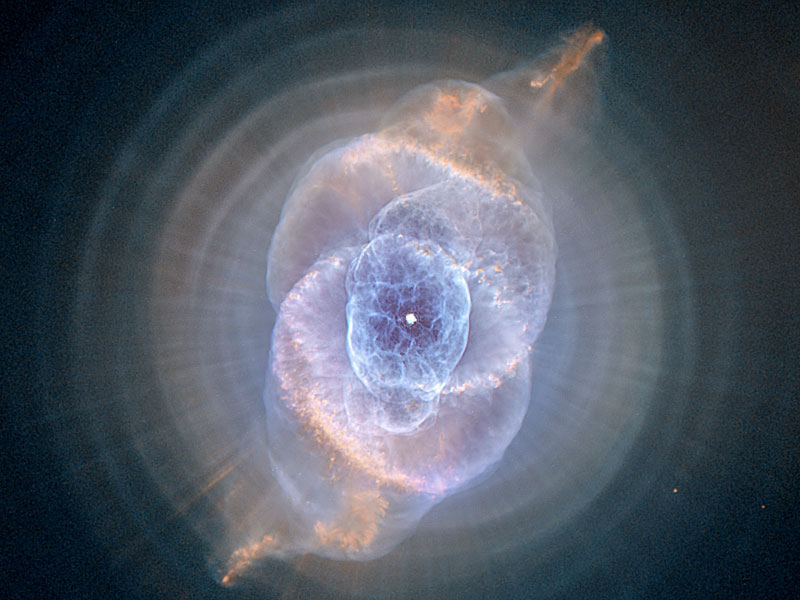
|
Explanation: Staring across interstellar space, the alluring Cat's Eye nebula lies three thousand light-years from Earth. A classic planetary nebula, the Cat's Eye (NGC 6543) represents a final, brief yet glorious phase in the life of a sun-like star. This nebula's dying central star may have produced the simple, outer pattern of dusty concentric shells by shrugging off outer layers in a series of regular convulsions. But the formation of the beautiful, more complex inner structures is not well understood. Seen so clearly in this sharp Hubble Space Telescope image, the truly cosmic eye is over half a light-year across. Of course, gazing into the Cat's Eye, astronomers may well be seeing the fate of our sun, destined to enter its own planetary nebula phase of evolution ... in about 5 billion years.
|
January February March April May June July August September October November December |
| ||||||||||||||||||||||||||||||||||||||||||||||||
NASA Web Site Statements, Warnings, and Disclaimers
NASA Official: Jay Norris. Specific rights apply.
A service of: LHEA at NASA / GSFC
& Michigan Tech. U.
Based on Astronomy Picture
Of the Day
Publications with keywords: Cat's Eye Nebula - NGC 6543 - planetary nebula
Publications with words: Cat's Eye Nebula - NGC 6543 - planetary nebula
See also:
- APOD: 2025 August 31 Á NGC 7027: The Pillow Planetary Nebula
- APOD: 2025 August 22 Á A Tale of Two Nebulae
- APOD: 2025 August 5 Á NGC 6072: A Complex Planetary Nebula from Webb
- APOD: 2025 July 29 Á A Helix Nebula Deep Field
- APOD: 2025 July 13 Á Planetary Nebula Mz3: The Ant Nebula
- APOD: 2025 June 9 Á Between Scylla and Charybdis: A Double Cosmic Discovery
- APOD: 2025 May 14 Á NGC 1360: The Robins Egg Nebula
